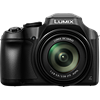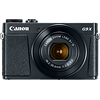Main
Model
Price
Advantages
launch
Announced
Body type
Camera subcategory
Sensor
Effective pixels
Max resolution
Sensor size
Sensor type
Processor
Image ratio w:h
Sensor photo detectors
Image
ISO
Boosted ISO (maximum)
White balance presets
Custom white balance
Image stabilization
Uncompressed format
JPEG quality levels
Photography features
Minimum shutter speed
Maximum shutter speed
Maximum shutter speed (electronic)
Aperture priority
Shutter priority
Manual exposure mode
Subject / scene modes
Built-in flash
Flash range
External flash
Flash modes
Self-timer
Metering modes
Exposure compensation
AE Bracketing
WB Bracketing
Continuous drive
Screen / viewfinder
Articulated LCD
Screen size
Screen dots
Touch screen
Screen type
Live view
Viewfinder type
Viewfinder coverage
Viewfinder magnification
Viewfinder resolution
Videography features
File Format
Microphone
Speaker
Videography notes
Optics & Focus
Focal length (equiv.)
Optical zoom
Maximum aperture
Autofocus
Digital zoom
Manual focus
Normal focus range
Macro focus range
Number of focus points
Physical
Weight (inc. batteries)
Dimensions
Environmentally sealed
Battery
Battery details
Battery Life (CIPA)
Storage
Storage types
Connectivity
USB
HDMI
Microphone port
Headphone port
Wireless
Wireless notes
Remote control
Other features
Orientation sensor
GPS
Timelapse recording
Samples
Videos
Summary
The Canon PowerShot G9 X Mark II maximum resolution of 5472 x 3648 pixels (20 megapixels) is better in comparison with the Lumix DC-FZ80 (Lumix DC-FZ82) highest resolution of 4896 x 3672 pixels (18 megapixels). The Canon PowerShot G9 X Mark II is produced with bigger sensor compared to the Lumix DC-FZ80 (Lumix DC-FZ82): 1″ (13.2 x 8.8 mm) versus 1/2.3' (6.17 x 4.55 mm). It is the most significant difference between these cameras as large sensor lets you to take photos of the higher quality. The Canon PowerShot G9 X Mark II has a wider ISO range of 125-12800 in compare with 80-3200 ISO range of the Lumix DC-FZ80 (Lumix DC-FZ82). This ISO range allow the photographer to take better photos in dim light conditions. The Canon PowerShot G9 X Mark II offers more number of white balance presets - 6. It gives you more control over colour.
The Canon PowerShot G9 X Mark II offers better minimum (30 seconds) and highest (1/2000 second) shutter speeds.
The Panasonic Lumix DC-FZ80 (Lumix DC-FZ82) supports external flash. It provides perfect control over the exposure and lighting of the subject in dim light or in bright light conditions when the camera owner needs to fill-flash. The Lumix DC-FZ80 (Lumix DC-FZ82) battery life is better than the Canon PowerShot G9 X Mark II battery life. According to CIPA standards the camera owner will be able to make 330 photos with the Lumix DC-FZ80 (Lumix DC-FZ82) and only 235 with the PowerShot G9 X Mark II. The Canon PowerShot G9 X Mark II weighs 206g that is 410g less in comparison with the weight of the Panasonic Lumix DC-FZ80 (Lumix DC-FZ82).
Taking into account the above differences the PowerShot G9 X Mark II will become the best buy. Get the lowest price on Amazon.


